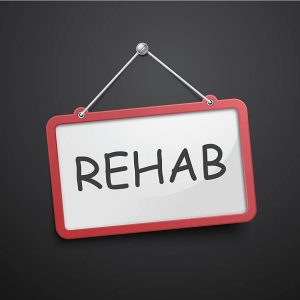
Choosing to enter rehab is a choice that can greatly benefit your physical and mental health. By choosing support to conquer your addiction, this is the first step on your road to recovery. That said, entering rehab can be intimidating for many. There is often fear related to withdrawals, therapy, and being away from family.
Help alleviate these fears by understanding what happens when you enter rehab. Here are the facts you need to know.
Rehab Timeline
Addiction rehab has a basic timeline to help provide you coping skills and allow for a full detox from drugs and/or alcohol. You’ll begin treatment with a medically supervised detox which can take anywhere from 24 hours to 7 days. After detox, you will be entered into a rehabilitation program for an average of at least 90 days. Leaving treatment before 90 days has been shown to greatly reduce your chance of recovery. Read more: What Happens if I Want to Leave Rehab Early?
While 90 days is a common rehabilitation timeline, many people in recovery will need extended support. Methadone treatment is recommended to last for at least 12 months. Transitional sober living is another step that many patients choose to take after completing their initial 90 days.
Intake and Detox
Most addicts hate the idea of detox because along with sobriety can come withdrawal symptoms. The strength and severity of withdrawal is dependent upon how much substance was consumed regularly, how often, and the specific type of substance. For example:
- Heroin, painkillers– Flu-like symptoms begin within 24-48 hours.
- Benzodiazepines – Anxiety and seizures can be present from one week to months later.
- Cocaine – Depression, and restlessness that may last up to 10 days.
- Alcohol – Classic hangover symptoms for about a day followed by possible tremors and seizure activity from 3 days to months after sobriety.
While these symptoms may be intimidating, medical professionals can provide support, and when needed medication, to ease these symptoms and monitor patients to ensure they safely withdraw from these substances. It cannot be emphasized enough that withdrawal should be supervised by a medical professional. Quitting on your own, especially cold turkey can result in serious health consequences, and in extreme cases — death.
After all the drugs have left a patient’s system and the worst of the withdrawal symptoms are dealt with, a patient moves on to the treatment phase of rehab.

Addiction Treatment
The treatment phase consists of a sober patient undergoing both individual and group therapy, and in many cases, improving on needed life skills. Treatment can occur at a hospital or residential facilities for inpatient care. Outpatient treatment may occur with daily meetings of varying length at a therapist’s office or inpatient treatment facility.
After undergoing a medically supervised detox, it is often recommended to continue with inpatient treatment. By working on your recovery onsite you help to filter out distractions and triggers from your addictive lifestyle. While many patients fear isolation from friends and family, typical inpatient programs actually encourage healthy family support and interaction as a patient continues their recovery process.
Goals of treatment include:
- Achieving freedom from substances including illicit drugs and alcohol.
- Maximizing a patient’s quality of life.
- Preventing relapse.
In addition to group and individual therapy, patients can also expect monitoring and accountability for their actions. Treatment programs require patient sobriety during inpatient treatment and will screen patients to assure compliance. In addition to drug screenings, frequent health screenings are also conducted to improve nutrition, physical health, and mental health. Some patients with underlying issues may be treated pharmacologically for illness such as schizophrenia, bipolar disorder, and depression.
After Treatment
What to expect after treatment is largely dependent upon the patient. Some people may need additional vocational coaching to help pursue a productive job, and many go back to school. Other patients may choose to move into sober living facilities to find ongoing support for their recovery. Some patients will go back to their former situation, which can have mixed results. While supportive friends and family are a strong asset, old habits can be difficult to break and a previous residence may have bad influences too.
The next step is to begin the treatment process. Get started now.
Recent Posts
- Castor Oil For Better Hair Growth: Is It Myth Or Fact?
- Exploring the Differences Between Sermorelin, Ipamorelin, Ibutamoren, GHRP2, and GHRP6: Understanding Their Role in Human Growth Hormone Regulation
- Unraveling the Mystery: Understanding the Causes and Prognosis of Ventricular Tachycardia Without Apparent Heart Disease
- Understanding Grandparents’ Rights in Oklahoma: Navigating Visitation and Legal Protections
- 10 Reasons to Consider Hypnotherapy for Your Health

